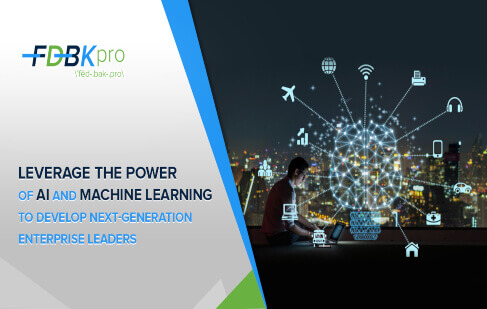It wasn’t long ago that Blackberry phone that was the ultimate status symbol. But today it is often considered as an example of how a good company can burn to the ground in the absence of great leadership. A history of nepotism and the focus on tenure over capability took the company from being a leader to nothing.
Developing leaders in today’s competitive global business environment is a formidable challenge for organizations to navigate.
It is time for us to move away from enterprise leadership development strategies that are focused on entitlement and move towards enterprise−focused approaches. The former strategy is myopic as it solely revolves around a competency model that is often not comprehensive enough to account for the dynamics of the market.
Strategies designed around the enterprise culture will be more value−oriented and purpose−driven. We also cannot ignore the constantly evolving dynamics of the enterprise ecosystem when it comes to leadership development.
Technological evolution and innovation, globalization, digital transformation, and a changing workforce (five generations at work) who have a different set of motivations are some of the major influencers of this environment of change. Technology has influenced all aspects of business and business strategy, strategic choices, and value-creation models. It is now influencing leadership development strategies as well.
Big Data, Machine Learning, Artificial Intelligence, Analytics are no longer being used simply for fueling business opportunities but are also showing great potential to make leadership development practices and strategies relevant.
Leaders of today have to battle a complex range of decisions − the convergence of the digital and physical worlds and the rise of the data culture and consequently, the data−driven organization. There are strategic choices to manage the competing horizons of managing the day−to−day business while building the business of the future. Navigating the complexities of customer management, managing the speed and volatility of an ever-competitive market, etc. are just the tip of the iceberg.
So how does technology tip the balance in favor of leadership development?
Goodbye guesswork
With so much data at our disposal, some leadership development strategies still rely on the proverbial gut feel instead of data. Technologies such as Big Data and analytics are becoming mainstream in enterprises. It is now becoming easier to make data−driven high−potential leadership development a reality. You can identify your high−value employees and also help them evaluate the key competencies and skills needed to become leaders. By taking the guesswork out, these technologies ensure that training and mentoring efforts are directed and result oriented.
Developing a personalized learning culture
Just like how Fitbit changed how we experience health and fitness; technology is influencing leadership development strategies to make them more inclusive and continuous.
Gone are the days of generic day−long training sessions, the learnings from which were forgotten almost as soon as the session got over.
Leadership development today is expected to be as personalized and result oriented as our Fitbit. Technologies such as AI help immensely here to create result−driven, personalized mentoring programs. Using AI, it is possible to send out timely nudges and coaching recommendations to employees based on data gathered based on comprehensive personality assessments. Such programs help talent nurture their core behavioral skills, and accelerate career growth, while also helping organizations build a leadership pipeline.
A focused approach towards leadership development
With a growing millennial workforce and other influencers of the Future of Work, HR teams are rethinking their employee engagement and talent development strategies.
Leadership development has to focus on key competencies that matter and less on the thousands of skills and behaviors. Technologies such as AI, Machine Learning, Big Data, and Data analytics are proving to be formidable weapons in the HR armory. These are helping in empowering the next generation of leaders to nurture their talent, fill the gaps, and grow in the modern-day workplace.
Research shows that spending on leadership development stands at an approximate $50 billion annually. Despite this, studies also reveal that only 18% of leaders can effectively manage business goals, and only 19% effectively develop leaders.
We have to remember that leadership development is all about competence and connection. This is where technology and data-driven mentorship programs work better. They can help in identifying key leadership improvement avenues, build self-awareness, make the right mentor-mentee pairings, provide accurate and pin-pointed feedback, and consequently bring fluency in leadership development.
Check out NumlyEngage™ Enterprise and take a data and analytics driven approach to your leadership development.

